

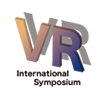
CEO and President of FORUM8
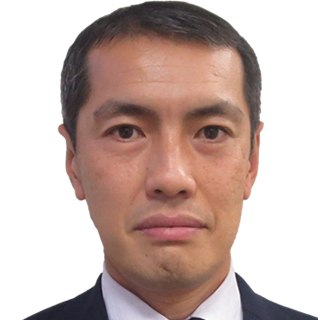
Director of Autonomous Driving and ITS Promotion Office, Automobile Division, Manufacturing Industries Bureau, Ministry of Economy, Trade and Industry
Profile
Lecture
First of all, Mr. Fukunaga summarized the concept of “CASE” (Connected, Autonomous driving, Sharing services, and Electrified), which presses the automotive industry for major restructuring, and significance of autonomous driving. At the same time, he outlined the definition of the levels of autonomous driving, current status and future of its social implementation centering on levels 3 and 4 with commercial vehicles and private cars respectively, and technological development and demonstration for level 4 by the domestic and overseas companies. He mentioned technological development towards realization and dissemination of autonomous driving services, improvement in infrastructure and systems, issues like improvement in social acceptability, and the necessity of industry-government-academia collaboration. Then he explained the review system for the autonomous driving business review meeting (established in 2015) in the previous fiscal year, the direction and roadmap of the initiatives that the practitioner of the demonstration of unmanned autonomous driving services should be aware of, and demonstrations of Last-Mile autonomous driving and convoy travelling of trucks on highways conducted in the previous year. Then he introduced four themes for the future and specific initiatives over five years aimed by “Project on Research, Development, Demonstration and Deployment (RDD&D) of Autonomous Driving toward the Level 4 and Mobility Services: RoAD to the L4” launched this fiscal year. He also referred to the expectations for Expo 2025 Osaka, Kansai.
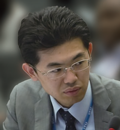
Director of New-Generation Mobile Communications Office, Radio Department, Telecommunications Bureau, Ministry of Internal Affairs and Communications
Profile
Lecture
First, he outlined the evolution image of ITS (Intelligent Transportation System), Use of radio waves in ITS such as ITS Connect (a safe driving support system using vehicle-to-vehicle and road-to-vehicle communication using the band of 760MHz), communication cases necessary for the autonomous driving era, and the realized image of V2X (Vehicle-to-Everything) and connected cars. After mentioning the government's ITS promotion system and the outline of the Ministry of Internal Affairs and Communications' measures on driving support systems, he explained the international frequency situation of V2X and the action plan for frequency reorganization. Then, he presented technical examinations in the Ministry's measures, examination of communication requirements necessary for autonomous driving through SIP, research and development related to collection, integration, and distribution of narrow and midrange information, overseas expansion of V2X, standardization activities related to ITS in ITU-R. In addition, he explained the Ministry's 5G promotion measures with videos, including the evolution of mobile communication systems, the benefits of autonomous driving services utilizing 5G, and development demonstrations (support for ensuring the safety of autonomous vehicles) for the realization of 5G comprehensive demonstration tests (5G application to truck convoy traveling) and problem-solving local 5G. He proceeded his speech into construction of 5G networks utilizing traffic signals, the future image of the digital society in the transportation field, the future society realized by “signal 5G” and AI, the realization of Society 5.0 in which cyberspace and physical space are integrated, and the role of the Ministry there.
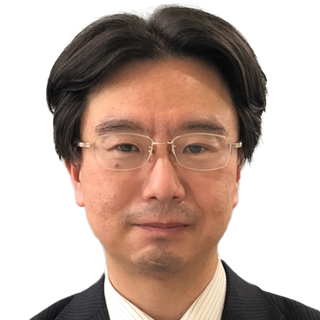
Director of ITS Policy and Program Office, Road Traffic Control Division, Road Bureau, Ministry of Land, Infrastructure, Transport and Tourism
Profile
Lecture
He outlined goals related to autonomous driving services in the Public-Private ITS Initiative/Roadmap (National Strategy Office of Information and Communication Technology, Cabinet Secretariat, Government of Japan, 2021) and the potential brought about by realizing them, autonomous driving approaches and exit strategies in it (for both logistics/mobility services and owner cars respectively). Among them, he focused on short- and long-term demonstration experiments of autonomous driving services conducted since 2017 in limited areas (bases such as Michinoeki [roadside stations] in hilly mountainous areas) and social implementations based on them at 4 base points, explaining their contents and current situations. Then, he expounded some items including the establishment of the "Study Group on Road Space corresponding to Autonomous Driving" in response to the confirmation of issues (necessity of automatic operation assistance facilities, etc.) through demonstration experiments, the points of the interim report (draft) there, and future policies for achieving the government's goals at an early stage. He also mentioned the image of automatic operation assistance facilities in the act on partial revision of the Road Act etc. (2020) as well as the related support measures. Moreover, he talked about the joint research and demonstration experiments on support for autonomous driving by providing information at the junction part of expressways (a system for providing information from the road that supports realization of autonomous driving). Then, he presented the experiment facilities and the contents for the demonstration experiment in the Tokyo coastal areas on the junction support information provision service (the Cabinet Office SIP) and the image of providing look-ahead information.
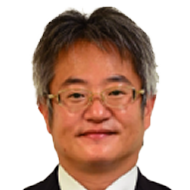
Director of Autonomous Driving Strategy Office, Road Transport Bureau, Ministry of Land, Infrastructure, Transport and Tourism
Profile
Lecture
He explained the key points of the significance of autonomous driving, levels of autonomous driving, the current state of autonomous driving technology, the problems about autonomous driving level 3, and the conditions that enable level 3 autonomous driving. Then, he focused on preparation of criteria as the Ministry's key role concerning autonomous driving. First of all, Road Transport Vehicle Act, which was developed on the premise that a driver drives a private vehicle, was modified in 2019 assuming that the car may be driven by the system with the following items: 1) addition of "the automatic operation device" to the equipment subject to safety standards, 2) Establishment of the licensing system for software update by radio, etc., 3) obligation of approval for the maintenance of the automatic operation device and such, and 4) management of technical information for the introduction of OBD inspections. After mentioning the security standards for automated operating devices developed according to the above modification, he presented a view to take the lead in participating in the UNECE World Forum for Harmonization of Vehicle Regulations (WP.29) etc. toward formulation of future international standards for autonomous driving. For mobile services, he cited autonomous driving demonstration conducted throughout Japan, and mentioned not only preparation for standards but also support measures such as relaxing the standards according to the situation and development of guidelines for "last-mile autonomous driving vehicle system". On the other hand, assuming that it is difficult to investigate the cause of accidents involving autonomous vehicles, an investigation committee with experts has been established. At the same time, he introduced efforts to inform the public for example, by publishing an educational video to promote prevention of overconfidence in driving support devices such as Advanced Emergency Braking System (AEBS).
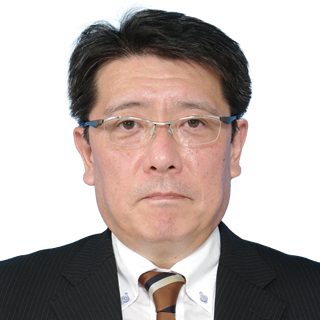
Director of Autonomous Driving Planning Office, Traffic Planning Division, Traffic Bureau, National Police Agency
Profile
Lecture
He summarized the main points of the situation of traffic accidents in Japan, the benefits expected of autonomous driving, levels of driving automation, etc. He also mentioned the review of the Road Traffic Act in line with the governmental goals of the Public-Private ITS Initiative/Roadmaps, support for mobile services, and consideration of the new public-private ITS basic concept. In addition, he talked about the efforts by the police aiming at early practical application of autonomous driving in accordance with the road environment in Japan. Regarding the development of traffic rules, he explained some points such as reflection of the automatic operation devices stipulated in the Road Transport Vehicle Act in accordance with the revision of the Road Traffic Act (2019) accompanying the practical application of Level 3 autonomous driving, operation of traffic rules assuming various cases that exclude the application of conditions for using automatic operation devices, and obligation of recording and preserving the operation status of automatic operation devices. Additionally, regarding development of demonstration environment, he explained "Guidelines for public road demonstration on autonomous driving systems" (formulated in 2016), clarification of the standards for road use permission depending on the contents of the demonstration, and application to the demonstration of automatic delivery robots and the procedure for them. In addition, he outlined research and development (provision of signal information using cloud, signal control using GNSS, improvement in data accuracy of traffic control information, and construction of an experimental environment for signal information provision via a network in the Tokyo coastal areas) that is being tackled under the framework of SIP for the practical application of autonomous driving systems. He also mentioned public relations and enlightenment such as warning to prevent overconfidence of driving support technology.
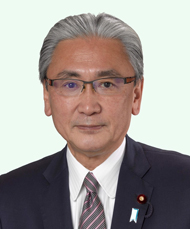
Chairman of the Parliamentary League for Considering Automotive Culture / Member of the House of Representatives
Profile
Referring to the campaign promises for which he was involved in its formulation as the Executive Acting Chairperson, Policy Research Council, Liberal Democratic Party (LDP) of JAPAN, he listed items related to future autonomous driving in it. He also stressed that the new economic measures being compiled by the Kishida administration also advocate the concept of promoting autonomous driving in defining “A Vision for a Digital Garden City Nation Realization”. On the other hand, in his opinion, in the future when autonomous driving becomes full-fledged, it will overlap with the global trend of changing into EVs (electric vehicles), and innovation in industrial structures including automobile-related products and formation of new relationships between rural areas and cities will progress. He positioned autonomous driving as a key technology there.
FORUM8 Executive Officer, System Sales Manager
Lecture
First, he focused on UC-win/Road's data linkage options, which are increasingly needed for use recently for autonomous driving and mobility experiments etc. He explained from the overall flow of data processing centered on UC-win/Road, to creation of a digital twin environment using open data made from point cloud data and such, which are spreading in the Ministry of Land, Infrastructure, Transport and Tourism (MLIT) (PLATEAU) and local governments, and the procedure of real-time driving simulation using the environment with video. Subsequently, as the solutions for Maas and autonomous driving in the DX era, he introduced such items as UC-win/Road cases, examples of the real-time environmental system, the lineup of simulators, latest user case studies about introducing products, new functions of UC-win/Road Ver.15, Shade3D Ver.22, Suite CHIDORI Engine, and F8VPS.
FORUM8 Executive Officer, Development Senior Manager
Lecture
UC-win/Road Ver.15.1 New Functions
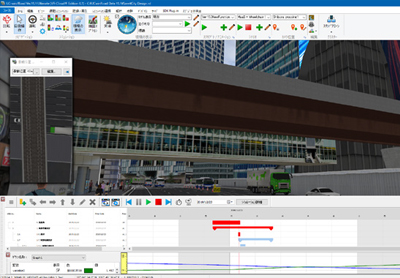
Enhancement of 4D simulation function
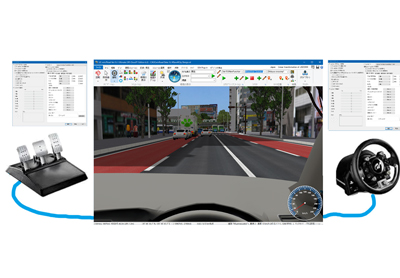
Multiple controller connection
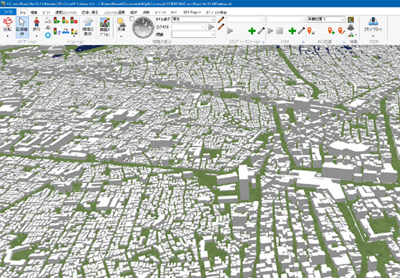
Import global models
Finally, from the perspective of the development division, FORUM8 staff member made presentation entitled "Latest Information on VR Simulation, Expansion of Platform and Development Roadmap". As the new functions of the current UC-win/Road (ver.15.0 and 15.1), he explained C++ programming interface, extensions of 4D simulation, extensions for IFC file format support, global model loading, support for multiple controllers, version upgrades for linking with various traffic simulation, and wheelchair simulation. At the same time, as the planned development of UC-win/Road, he mentioned extensions of supporting data of CityGML and SmartCity, input and output of OpenDrive road data, Python programming interface, and general-purpose connection interface, and outlined some of them. He also mentioned use examples of F8VPS and its functions, and functions of VR-next glTF Viewer 2.0. Then he talked about the concept of the FORUM8 platform, the application development platform, and the concept of the entire image of solutions through them.
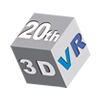
In the second half of the day1 afternoon, the awards announcement and awards ceremony of the "20th 3D-VR Simulation Contest on Cloud", a competition for VR data works created using UC-win/Road, were held. Prior to this, 13 works were nominated at the Work Screening for Nomination on October 26 from among the many works submitted by October 15. From November 5 to 14, general voting was held using VR-Cloud® for these works. On November 16, prizes were decided at the Award Winners Decision meeting held in the Tokyo head office of FORUM8 by the jury, consisting of three members: the jury chair, Prof. Fumio Seki, Professor, Department of Civil Engineering, College of Science and Technology, Nihon University; juror, Mr.Hiroo Kasagi, Representative, NPO Community Development Studio; and juror, Prof. Tetsunori Haraguchi, Visiting Professor, Institutes of Innovation for Future Society, Nagoya University.
As a result, the Grand Prix (Grand Prize) was awarded by National Science & Technology Center for Disaster Reduction (Taiwan) for "Creation of Disaster Scene Using VR And Display of Flood Simulation Analysis Data”. This introduced VR to the flood exercise platform of the existing disaster information website. It aims to visualize flood simulations to improve the effectiveness of disaster prevention drills. Among the many examples of disaster simulations, it uses newly created 3D terrain models linked with local information and flood analysis data. It was evaluated as persuasive (Prof. Seki), which accurately reproduces the process that can occur and reaches directly to residents.
Two works received the 2nd Prize (Excellence Award). One of the winners is MAEDA CORPORATION for "Soil Transport Planning Using Traffic Simulation Analysis". In order to formulate an optimal vehicle allocation plan at the construction site, the actual driving road and traffic conditions are reproduced on VR. A system was built up to verify the operation cycle by 4D simulation considering the amount of transported soil, loading, tire cleaning, etc. It was positioned as one of the guidelines for how to use VR (Mr. Haraguchi).
The other one is "Simulator for Highway Snow Removal in Echelon Formation" by Central Nippon Expressway Company Limited. A training simulator was developed for the purpose of training snow removal vehicle operators. In order to train operators with a sense close to the actual vehicle, it emphasizes the reproduction of the highway environment, and is capable of diagnosing the accuracy of the driving position and the distance between vehicles. It also supports linking three simulators for training snow removal in Echelon formation performed with multiple units. Since it reproduces the snow on the highway carefully, it was evaluated that it would become an effective training tool for passing on technology, which was considered difficult (Mr. Kasagi).
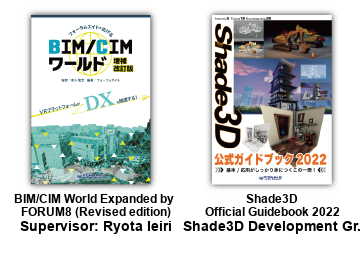
BIM/CIM World Expanded by FORUM8 Revised edition
Shade3D Official Guidebook 2022
FORUM8 Publishing has published two books at the same time with the Design Festival. At the end of Day 1, lectures were given by each author and supervisor.
The first speaker, Mr. Ryota Ieiri, a Construction IT journalist and supervisor of "BIM/CIM World Expanded by FORUM8 Revised edition", introduced this book. It is an updated edition of the practical guidebook for CIM published in 2016, with addition of new items such as i-Construction, VR platform, and DX. Describing this handbook on construction ICT, he cited the content that FORUM8 has been expanding the world of BIM/CIM based on software, hardware, and human network. He also mentioned new topics in the book such as digital twins, suite construction accounting, BIM linked to Gantt charts, flood simulation, teleworking on the site due to coronavirus crisis, and DX (Digital Transformation). He expects that in the future, the BIM/CIM world is likely to spread more and more. For example, being conscious of DX, the concerned people can keep collaboration without moving by creating a real thing after making its virtual form as the digital twin.
Next, the author of “Shade3D Official Guidebook 2022”, who is a member of Shade3D Development Group of FORUM8, introduced the book. While the main contents of "Shade3D Official Guidebook 2020" released in 2020 was explanation of techniques for introductory- and intermediate-level users, this book is organized as a primer for beginners. The book includes tutorials that let the reader learn how to operate while creating shapes, and contents that give explanation about interface as well as operation. Regarding the techniques and functions used in Shade3D, 50 items are carefully selected from the Forum8 knowledge base. It allows the reader to understand which functions are available at what time, and learn the basics well. Chapters from 1 to 5 provide a collection of techniques and explanation, Chapter 6 provides tutorials, and Chapters 7 provides examples from Shade3D users. Finally, the speaker presented a special lecture titled "Latest Features of Shade3D and Initiatives on BIM/CIM" in Day2.
(The reports are written by Takashi Ikeno)